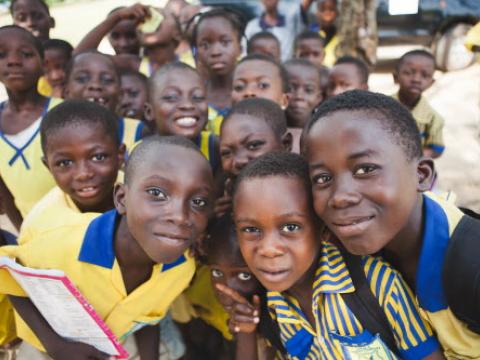Scaling-up sanitation coverage in Ghana

By Robel Lambisso, West Africa Regional WASH Technical Advisor & GI-WASH Team, World Vision Ghana
Since the early 1990s, Ghana’s water and sanitation sector has seen major reforms to address weaknesses. Appropriate institutional, legal and regulatory structures have been put in place, particularly for the urban and rural water supply system.
While the country enjoys a marked success in achieving 89% access to safe water, the same cannot be said for sanitation. That achievement is eclipsed because of the mere 15% coverage of improved sanitation. (Source: JMP 2015)
Ghana’s improved sanitation coverage has not exceeded 15% for a long time. This means that only 15 in every 100 Ghanaians have access to sanitation facilities and services, while the rest are left defenceless against the inevitable consequences. Many schools lack access to improved sanitation and hygiene facilities. Children are left with no option but to openly defecate in nearby bushes and hideouts, and this has negative consequences for child health, quality education and general well-being.
Poor sanitation and hygiene practices are also linked to malnutrition and diseases such as diarrhoea and cholera. Diarrhoeal disease is the second leading cause of death in children under 5 (WHO 2017) Poor sanitation and hygiene practices reduce productivity and increase healthcare cost, trapping communities in poverty.
In response to this situation, World Vision Ghana’s interventions have been focusing on the provision of clean water, access to improved sanitation facilities and good hygiene practices with a view to ensure the well-being of children and their families.
To a large extent, the challenges to sanitation in Ghana and many other developing nations are linked to the inability to create proper disposal points for solid waste, lack of enforcement of sanitation laws, population growth, poor financing of sanitation policies, rural-urban migration, poor sanitation infrastructure, lack of sanitation technologies among others.
Addressing these related factors requires a systems approach, and it needs to be done in a concerted manner. Therefore, key players in the Ghana WASH sector, including World Vision, came together at the Noda Hotel in Kumasi, in the Ashanti Region of Ghana, in April 2017.
This national reflection meeting was organised by World Vision Ghana and included 47 participants (22 from partner organizations and 25 from World Vision Offices). The meeting had the following key objectives:
- To identify the gaps in the implementation of the Community Led Total Sanitation (CLTS) approach by World Vision Ghana and recommend actions for addressing implementation gaps
- To learn from other agencies implementing sanitation projects in the same context. Specifically, partners sharing key successes, strategies for scale-up, challenges, lessons learnt and where to partner in future.
To develop a comprehensive implementation plan towards the achievement of 100% Open Defecation Free (ODF) communities in all World Vision Ghana programme areas by end of FY 2020.
With the above objectives in mind, presentations were made focusing on the following topics:
- Challenges of Sanitation in the West Africa Region
- The Rural Sanitation Model & Strategy for Ghana
- Working in Partnership
- Creating Sanitation Enterprises
- Best Practices and Challenges in the Sector.
In addition, expert panel discussions and group discussions were also conducted to deepen the awareness on key topics drawn from the conversations.
At the end of the three-day meeting, representatives of the cluster offices and from World Vision area programmes made commitments to fulfil action plans to reach 100% ODF status by the end of fiscal year 2020 in all World Vision operation areas. The national focal person for CLTS and experts drawn from UNICEF, global communities, and other district and regional level government office partners worked with the World Vision team to develop the action plan.
It is gratifying to note that within two months after this meeting, efforts toward this comprehensive plan for 100% ODF by 2020 are progressing steadily as 30 communities have already been declared open defecation free.

